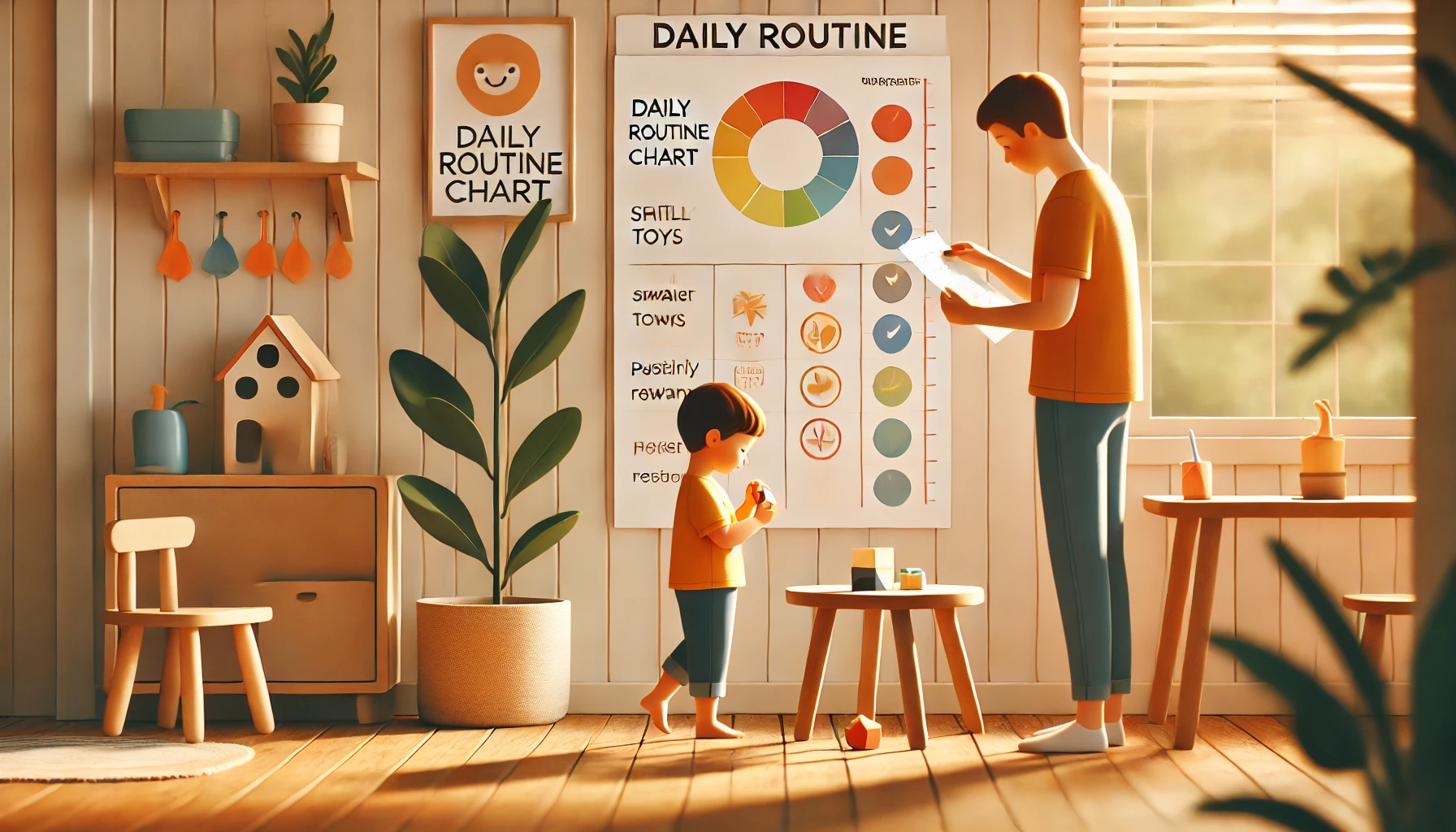How to Teach Young Children About Self-Discipline at Home
Self-discipline is an essential skill that helps children develop self-control, responsibility, and the ability to make good choices. Teaching young children self-discipline at home sets them up for success in school, relationships, and future responsibilities. By using structure, encouragement, and consistency, parents can help children learn to regulate their behavior and emotions. In this article, we’ll explore practical ways to teach self-discipline at home.
Why Teaching Self-Discipline is Important
- Encourages responsibility – Helps children take ownership of their actions.
- Builds self-control – Teaches kids how to manage emotions and impulses.
- Improves focus and patience – Helps children stay committed to tasks.
- Develops resilience – Encourages children to handle challenges calmly.
- Prepares for lifelong success – Builds habits for school, work, and relationships.
1. Establish Routines and Consistency
Having a daily routine helps children understand expectations and build discipline.
Activity Idea:
- Create a morning and bedtime routine with simple steps like brushing teeth, getting dressed, and reading a book.
- Use a visual schedule with pictures or checklists for daily activities.
- Set clear expectations, like “After dinner, we always clean up before playing.”
What Kids Learn:
- How to manage time effectively
- The importance of following through with tasks
- Self-reliance in completing daily activities
2. Set Clear and Age-Appropriate Rules
Rules help children understand boundaries and the importance of self-discipline.
Activity Idea:
- Create a family rules chart with simple guidelines like “Use kind words” and “Put toys away after playing.”
- Explain why rules exist, rather than just enforcing them: “We clean up so we can find our toys easily.”
- Use positive reinforcement when children follow rules, saying, “Great job cleaning up without being asked!”
What Kids Learn:
- Respect for boundaries and expectations
- The connection between actions and consequences
- How to take responsibility for their behavior
3. Teach Delayed Gratification
Learning to wait for rewards strengthens self-control and patience.
Activity Idea:
- Try the marshmallow test: Offer one marshmallow now or two if they wait a few minutes.
- Use a reward system like a sticker chart for completing daily responsibilities.
- Encourage saving money in a piggy bank instead of spending immediately.
What Kids Learn:
- The value of patience and long-term rewards
- How to resist immediate gratification
- The importance of working toward goals
4. Encourage Problem-Solving and Decision-Making
Letting children make small decisions helps them learn responsibility.
Activity Idea:
- Give choices like, “Would you like to do your homework before or after dinner?”
- When they face a challenge, ask, “What do you think is the best way to solve this?”
- Guide them through decision-making by discussing possible outcomes.
What Kids Learn:
- How to make thoughtful choices
- Independence in solving problems
- Confidence in their decision-making abilities
5. Use Natural Consequences Instead of Harsh Punishment
Helping children experience the results of their actions teaches accountability.
Activity Idea:
- If a child refuses to wear a coat, let them feel a little cold (safely) so they understand why coats are important.
- If they don’t clean up their toys, explain that they might not find them later.
- Avoid unnecessary punishments—focus on teaching lessons instead.
What Kids Learn:
- How to take responsibility for choices
- The impact of actions on daily life
- How to learn from mistakes
6. Teach Emotional Regulation and Self-Control
Helping children manage emotions teaches them to stay calm and make better choices.
Activity Idea:
- Practice deep breathing exercises together: “Smell the flower, blow out the candle.”
- Encourage counting to 10 before reacting in frustration.
- Use a calm-down corner where children can take a break when feeling overwhelmed.
What Kids Learn:
- How to stay calm in challenging situations
- Strategies for managing frustration
- The importance of thinking before reacting
7. Provide Opportunities for Independence
Letting children take responsibility builds confidence and self-discipline.
Activity Idea:
- Assign simple chores like putting away shoes, feeding a pet, or helping set the table.
- Encourage them to pack their school bag or choose their own outfit for the day.
- Praise their efforts: “You did a great job getting ready by yourself today!”
What Kids Learn:
- How to take initiative in daily tasks
- Confidence in their abilities
- The importance of completing responsibilities
8. Be a Role Model for Self-Discipline
Children learn self-discipline by watching how adults manage responsibilities.
Activity Idea:
- Show how you follow a schedule and complete tasks, saying, “I have to finish my work before I relax.”
- Demonstrate self-control by staying patient in frustrating situations.
- Discuss times when you made a mistake and how you fixed it.
What Kids Learn:
- The importance of discipline in everyday life
- How to handle responsibilities with patience
- That self-improvement is always possible
Final Thoughts
Teaching self-discipline at home helps children develop self-control, responsibility, and confidence. By using routines, setting clear expectations, encouraging problem-solving, and modeling self-discipline, parents can guide children in learning valuable skills that will benefit them throughout life.
